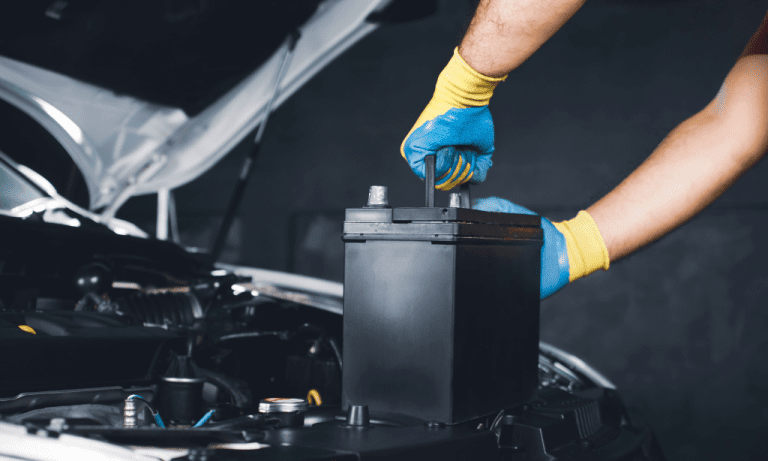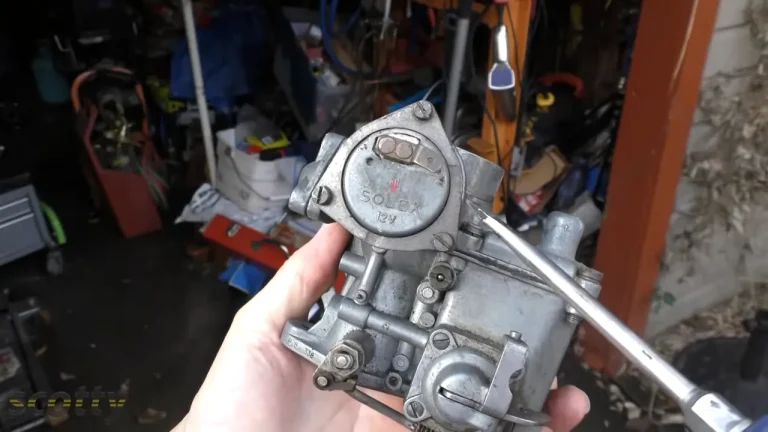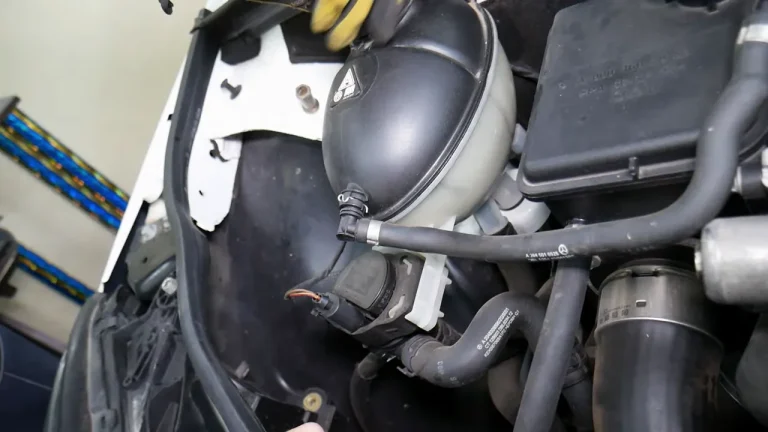Unveiling the Northstar Engine: Common Problems and Life Expectancy Revealed
The northstar engine commonly experiences issues with the head gaskets and overheating, and its life expectancy is typically around 150,000 to 200,000 miles. The northstar engine, despite its renowned power and performance, is not without its flaws.
Two common problems that owners may encounter with this engine are head gasket failures and overheating issues. These problems can lead to coolant leaks, engine misfires, and even complete engine failure if left unaddressed. However, with proper maintenance and timely repairs, the northstar engine can have a reasonably long life expectancy of about 150,000 to 200,000 miles.
We will delve deeper into these common issues and explore ways to prevent or address them effectively. So, if you own a vehicle equipped with the northstar engine, it is crucial to be aware of these potential problems and take necessary precautions to ensure the longevity of your engine.
Introduction To The Northstar Engine
What Is The Northstar Engine?
When it comes to v8 engines, the northstar is a name that holds significance in the automotive industry. Developed by general motors, the northstar engine was introduced in 1992 and was known for its advanced technology and performance capabilities. Let’s take a closer look at what makes the northstar engine unique and why it gained such popularity over the years.
Key Points:
- Advanced design: The northstar engine was designed with an innovative dual overhead camshaft (dohc) configuration, allowing for improved valve control and increased power output.
- Aluminum construction: One of the distinguishing features of the northstar engine is its lightweight aluminum construction, which not only contributes to better fuel efficiency but also enhances overall performance.
- All-wheel drive capability: The northstar engine was the first v8 engine to offer an all-wheel-drive option, providing enhanced traction and stability on the road.
- Cutting-edge technology: With features such as electronic fuel injection, an electronically controlled transmission, and advanced diagnostics systems, the northstar engine was considered ahead of its time in terms of technological advancements.
- Smooth and quiet operation: The design of the northstar engine incorporated measures to reduce noise and vibration, resulting in a smooth and quiet driving experience for the driver and passengers.
Its Significance In The Automotive Industry:
The northstar engine brought a revolutionary change in the automotive industry, setting new standards for performance and luxury vehicles. Its introduction marked a significant milestone for general motors and the industry as a whole. Here are some reasons why the northstar engine has maintained its significance over the years:
- Power and performance: The northstar engine was renowned for its power and performance capabilities, allowing vehicles equipped with this engine to deliver impressive acceleration and top speeds.
- Luxury vehicle compatibility: The northstar engine was predominantly used in luxury vehicles, such as cadillac models, adding to their status and appeal. It became a symbol of luxury and performance in the automotive world.
- Enhanced fuel efficiency: Despite its powerful performance, the northstar engine also emphasized fuel efficiency. The combination of its lightweight construction and advanced technologies contributed to improved gas mileage, making it an attractive option for those seeking both power and efficiency.
- Industry recognition: The northstar engine received numerous accolades and awards for its innovation, performance, and superior design. Its impact on the industry was widely recognized and appreciated.
The northstar engine holds a significant place in the automotive industry due to its advanced design, cutting-edge technology, and remarkable performance. Its introduction revolutionized luxury vehicles, setting new standards and pushing the boundaries of power and efficiency. Whether it’s the smooth operation or the all-wheel-drive capability, the northstar engine continues to leave a lasting impression on both enthusiasts and everyday drivers alike.
Common Problems Experienced By Northstar Engines
The northstar engine, known for its performance and durability, has its fair share of common problems that owners frequently come across. Let’s take a closer look at some of these issues:
Head Gasket Failures
- Head gasket failures are a well-known problem for northstar engines. This can lead to coolant and oil leaks, as well as overheating issues. Some key points to consider are:
- The head gaskets may fail due to design flaws or issues with the engine’s cooling system.
- Symptoms of a failing head gasket include white exhaust smoke, overheating, coolant loss, and the presence of oil in the coolant or vice versa.
- Repairing head gasket failures can be expensive and time-consuming, often requiring the engine to be removed for repairs.
Oil Leaks And Consumption Issues
- Oil leaks and excessive oil consumption are also common problems experienced by northstar engines. Here are some important things to know:
- The main culprits for oil leaks are often the valve cover gaskets and oil pan gaskets.
- Faulty seals or gaskets can lead to oil leaks, resulting in messy engine bays and potential engine damage if not addressed promptly.
- Excessive oil consumption can be caused by worn piston rings, faulty pcv valves, or other internal engine issues.
- Regularly checking the oil level and addressing any leaks promptly can help prevent more significant problems down the line.
Overheating Problems
- Overheating is a serious concern with northstar engines and can have detrimental effects on engine performance and longevity. Consider these key points:
- Overheating problems can arise due to issues such as a malfunctioning thermostat, a faulty water pump, or a clogged radiator.
- Symptoms of engine overheating may include a rising temperature gauge, steam coming from the engine bay, or a coolant leak.
- Regular maintenance, including coolant flushes and inspections of cooling system components, can help prevent overheating.
Northstar engines are known for their power and performance, but they are not without their common issues. Head gasket failures, oil leaks and consumption problems, as well as overheating, should be addressed promptly to maintain the engine’s longevity and prevent more significant damage.
Regular maintenance, inspections, and addressing any symptoms or signs of these problems can help keep your northstar engine running smoothly.
Factors Affecting The Life Expectancy Of A Northstar Engine
Regular Maintenance And Servicing
Regular maintenance and servicing play a crucial role in determining the life expectancy of a northstar engine. Here are some key points to consider:
- Following the manufacturer’s recommended maintenance schedule is essential to keep the engine running smoothly and prolong its lifespan.
- Routine oil changes, filter replacements, and fluid checks are vital for the engine’s health.
- Timely inspections and repairs of any potential issues can prevent bigger problems down the line.
- Using high-quality, recommended engine oil and parts can enhance performance and longevity.
Driving Conditions And Habits
Driving conditions and habits have a significant impact on the longevity of a northstar engine. Consider the following points:
- Harsh driving conditions such as extreme temperatures, heavy traffic, and dusty environments can put additional stress on the engine, potentially reducing its life expectancy.
- Frequent short trips do not allow the engine to reach its optimal operating temperature, causing increased wear and tear.
- Aggressive driving, excessive idling, and constant stop-and-go traffic can accelerate engine wear.
- Regularly driving at high speeds can strain the engine and decrease its longevity.
Age And Mileage Of The Engine
The age and mileage of a northstar engine also influence its life expectancy. Take note of the following:
- As an engine gets older, its components naturally wear out and may require more frequent repairs or replacements.
- High mileage engines may exhibit increased signs of wear and may have experienced more stress over time.
- Previous maintenance history and care for an older engine play a significant role in determining its future reliability.
- Properly maintained engines tend to have longer life expectancies, regardless of age or mileage.
Remember, by prioritizing regular maintenance, adapting good driving habits, and considering the age and mileage of your northstar engine, you can help extend its life expectancy and enjoy optimal performance for years to come.
Head Gasket Failures: Causes And Solutions
Northstar Engine Common Problems And Life Expectancy
Head gasket failures are a common issue that northstar engines face. Understanding the causes and solutions for head gasket failures can help you diagnose and address problems promptly. Let’s explore this topic further.
What Causes Head Gasket Failures In Northstar Engines?
Head gasket failures in northstar engines can occur due to various reasons. Some of the common causes include:
- Overheating: Excessive heat can cause the head gasket to warp or crack, leading to failure.
- Coolant leaks: Constant coolant leaks can gradually deteriorate the head gasket, resulting in failure over time.
- Poor maintenance: Neglecting regular maintenance, such as not replacing coolant or ignoring potential issues, can contribute to head gasket failures.
- Faulty installation: If the head gasket was not properly installed during engine assembly, it may fail prematurely.
Steps To Diagnose Head Gasket Issues
Diagnosing head gasket issues in northstar engines requires a systematic approach. Here are the steps to follow:
- Visual inspection: Check for any visible signs of coolant leaks, such as white smoke from the exhaust, milky oil, or coolant odor.
- Compression test: Perform a compression test to identify any variations in cylinder pressures, which could indicate a leaking head gasket.
- Cylinder leak-down test: This test measures the amount of compressed air that escapes from the cylinder, indicating if there is a breach in the head gasket.
- Coolant pressure test: This test helps detect any coolant leaks by pressurizing the system and monitoring pressure loss.
- Combustion gas test: By analyzing the engine’s coolant for traces of combustion gases, you can determine if there is a head gasket leak.
Repair Options And Solutions
If you suspect a head gasket failure in your northstar engine, various repair options and solutions are available. The best course of action depends on the extent of the damage and your budget. Consider the following:
- Replacement: Replacing the head gasket is often the most effective solution, ensuring a reliable repair if performed correctly.
- Engine overhaul: If the head gasket failure has caused significant damage to the engine, an overhaul may be necessary to restore full functionality.
- Coolant system inspection: Conduct a thorough inspection of the coolant system to identify any underlying issues that may have contributed to the head gasket failure.
- Regular maintenance: Implementing a routine maintenance schedule, including coolant changes and system checks, can help prevent future head gasket failures.
Remember, it is crucial to consult with a trusted mechanic or engine specialist to properly diagnose the issue and determine the most appropriate repair option.
By understanding the causes, diagnosing the problem accurately, and selecting the right repair solution, you can effectively address head gasket failures and prolong the life of your northstar engine. Stay proactive to ensure smooth and reliable performance from your vehicle.
Oil Leaks And Consumption Issues: Diagnosis And Fixes
Understanding The Common Causes Of Oil Leaks
Oil leaks can occur in northstar engines due to a variety of reasons. Understanding the common causes will help you identify the issue and take the necessary steps to fix it. Here are some key points to consider:
- Aging seals and gaskets: Over time, the seals and gaskets in your engine can wear out, leading to oil leaks. The heat and pressure in the engine can cause these components to deteriorate.
- Loose or damaged oil pan: The oil pan is responsible for holding the engine oil. If it becomes loose or gets damaged, it can result in oil leaks.
- Faulty valve cover gaskets: The valve cover gaskets are responsible for sealing the valve covers and preventing oil leaks. If these gaskets fail, oil can leak out.
- Cracked or damaged engine block: In some cases, the engine block itself can develop cracks or damage, leading to oil leaks.
How To Identify Oil Consumption Issues
Oil consumption issues can arise when your engine starts burning oil at a higher rate than usual. This can lead to low oil levels and potentially cause engine damage if not addressed promptly. Here are some signs to look out for:
- Frequent need to add oil: If you find yourself needing to add oil to your northstar engine frequently, it could be an indication of oil consumption issues.
- Blue smoke from the exhaust: Excessive oil consumption can lead to the burning of oil, resulting in blue smoke coming out of the exhaust pipe.
- Poor engine performance: Oil consumption problems can affect the engine’s performance, causing it to run rough or lose power.
Possible Solutions And Repairs
When faced with oil leaks or consumption issues in your northstar engine, there are several possible solutions and repairs to consider. Here are some options:
- Seal and gasket replacements: If aging seals and gaskets are causing the leaks, replacing them can effectively solve the issue.
- Repairing or replacing the oil pan: If the oil pan is loose or damaged, it may need to be repaired or replaced to stop the leaks.
- Valve cover gasket replacement: Faulty valve cover gaskets can be replaced to prevent oil leaks.
- Engine block repair or replacement: In more severe cases, if the engine block is cracked or damaged, it may need to be repaired or replaced.
Remember, it’s crucial to consult with a professional mechanic or expert who specializes in northstar engines to diagnose the specific problem and recommend the most suitable solution for your situation.
Overheating Problems: Prevention And Solutions
Recognizing Signs Of Engine Overheating
- The temperature gauge in your vehicle’s dashboard showing a high reading or moving towards the red zone.
- Steam or smoke coming from under the hood.
- Unusual smells such as burning oil or coolant.
- Decreased performance or power loss.
- Warning lights or messages on the dashboard.
Reasons Behind Northstar Engine Overheating
- Coolant leaks, which can be caused by a faulty radiator, water pump, or hoses.
- Malfunctioning thermostat, which regulates the flow of coolant through the engine.
- Clogged radiator or a blocked cooling system, hindering proper heat dissipation.
- Defective radiator cap, leading to loss of coolant.
- Insufficient coolant levels, often resulting from neglecting routine maintenance.
- Faulty head gasket, causing coolant to mix with engine oil and leading to overheating.
Strategies To Prevent And Resolve Overheating Issues
- Regularly inspect the cooling system, including hoses, radiators, and coolant levels, to detect and fix any leaks promptly.
- Replace the thermostat as recommended by the manufacturer or if signs of malfunction are noticed.
- Flush the radiator and cooling system periodically to remove any built-up debris or blockages.
- Ensure the radiator cap fits properly and maintains the correct pressure.
- Monitor coolant levels regularly and top up as necessary to prevent overheating.
- Perform regular maintenance, such as changing the coolant, as recommended by the manufacturer.
- If overheating occurs, immediately pull over to a safe location and turn off the engine to prevent damage. Allow the engine to cool down before attempting any further actions.
- Seek professional help if problems persist, as further diagnosis and repairs may be required.
Remember, understanding and addressing overheating issues promptly can help extend the life of your northstar engine and keep it running smoothly on the road. Keep an eye out for the signs of overheating mentioned above and take proactive measures to prevent any potential damage.
Longevity Of A Northstar Engine: Maintenance Tips
Best Practices For Maintaining A Northstar Engine
When it comes to maintaining a northstar engine, following a few best practices can help optimize its life expectancy. Regular inspections and fluid changes are essential to keep the engine running smoothly. Additionally, there are certain maintenance tips that can contribute to the longevity of the engine:
- Perform routine oil changes: Regular oil changes are crucial to keep the northstar engine running efficiently. It is recommended to change the engine oil every 3,000 to 5,000 miles or as specified by the vehicle manufacturer.
- Use high-quality oil and filters: Opt for high-quality oil and filters to ensure adequate lubrication and filtration for the northstar engine. This helps maintain optimal performance and protects against potential damage.
- Check and maintain proper fluid levels: Regularly inspect and maintain the appropriate levels of coolant, transmission fluid, and other vital fluids. Low fluid levels can lead to overheating and damage to the engine components.
- Monitor the cooling system: A well-functioning cooling system is essential for the northstar engine’s longevity. Regularly inspect the radiator, hoses, and water pump for any signs of leaks or damage. Ensure the coolant is clean and at the proper concentration.
- Keep the engine clean: Regularly clean the engine bay to prevent the buildup of dirt, debris, and grime. A clean engine minimizes the risk of overheating and maintains better overall performance.
- Address any warning signs promptly: Pay attention to warning signs such as unusual noises, vibrations, or engine performance issues. Addressing these problems promptly can prevent further damage to the northstar engine.
- Follow the manufacturer’s maintenance schedule: Adhere to the recommended maintenance schedule provided by the vehicle manufacturer. This includes scheduled tune-ups, belt replacements, and other necessary maintenance tasks.
- Avoid excessive idling or aggressive driving: Excessive idling and aggressive driving can put unnecessary strain on the northstar engine. Try to avoid prolonged idling periods and practice smooth, moderate acceleration and deceleration.
- Keep the engine protected during extreme weather conditions: Extreme temperatures can affect the performance of the engine. During hot weather, ensure proper cooling, and during cold weather, allow the engine to warm up before driving.
- Consult a professional for major repairs and servicing: When it comes to major repairs or servicing, it is best to consult a professional mechanic with experience in northstar engines. They have the expertise to diagnose and resolve any complex issues.
By following these maintenance tips, you can optimize the life expectancy of your northstar engine and ensure smooth performance for years to come. Remember that proper care and regular maintenance are key to keeping your engine running efficiently.
Conclusion: Maximizing The Durability Of The Northstar Engine
Recap Of Common Problems And Their Solutions
- Overheating: One of the most common problems with the northstar engine is overheating. This can lead to serious engine damage if not addressed promptly.
- Solution: Regularly check the cooling system for any leaks or clogs. Ensure that the coolant is at the right levels and consider flushing the system periodically to remove any buildup.
- Head gasket failure: Another issue that many northstar engine owners face is head gasket failure. This occurs when the head gasket fails to seal properly, leading to coolant leakage and potential engine damage.
- Solution: Regularly monitor the coolant levels and keep an eye out for any signs of coolant leakage, such as white smoke from the exhaust or coolant in the engine oil. If any of these symptoms are detected, it’s essential to have the head gasket replaced as soon as possible.
- Oil leaks: Oil leaks can occur in various areas of the northstar engine, such as the oil cooler lines, oil pan, or valve cover gaskets. These leaks can lead to oil consumption and potential engine damage if left unattended.
- Solution: Regularly check for any signs of oil leaks, such as oil spots on the ground or a burning oil smell. Address any leaks promptly and have the affected parts repaired or replaced if necessary.
- Carbon buildup: Carbon buildup in the intake manifold and valves is a common problem with the northstar engine. This can lead to decreased engine performance and fuel efficiency.
- Solution: Perform regular intake manifold cleanings to remove any carbon buildup. Consider using fuel system cleaners to help prevent carbon buildup in the first place.
Importance Of Proper Maintenance And Care
Proper maintenance and care are crucial for maximizing the durability of your northstar engine. Here are some key points to consider:
- Regular oil changes: Ensuring that the engine oil is clean and at the right levels is essential for the longevity of the northstar engine. Follow the manufacturer’s recommendations for oil change intervals and use the appropriate oil type.
- Cooling system maintenance: The cooling system should be regularly inspected for any leaks, coolant levels should be checked, and the coolant should be flushed periodically to prevent overheating and potential engine damage.
- Timely repairs: It’s crucial to address any issues promptly, rather than letting them escalate into more significant problems. Regularly monitor the engine for any unusual noises, vibrations, or warning lights, and have them diagnosed and repaired as soon as possible.
- Proper driving habits: Avoid excessive idling, aggressive driving, and unnecessary engine strain to reduce wear and tear on the northstar engine. Opt for smooth acceleration and deceleration, and avoid overloading the engine.
- Regular inspections: Have the northstar engine inspected by a qualified mechanic at regular intervals to identify any potential problems early on. This can help prevent costly repairs down the line and extend the lifespan of the engine.
Ensuring A Long And Reliable Lifespan For Your Northstar Engine
To ensure a long and reliable lifespan for your northstar engine, it’s important to follow these best practices:
- Keep up with regular maintenance: Adhere to the manufacturer’s recommended maintenance schedule, including oil changes, filter replacements, and other routine inspections. This will help keep the engine running smoothly and prevent potential issues.
- Use high-quality fluids and parts: Opt for high-quality engine oil, coolant, and other fluids to ensure optimal performance and protection for the northstar engine. Similarly, use genuine replacement parts when repairs are needed to maintain the engine’s integrity.
- Drive responsibly: Avoid aggressive driving habits, excessive speeding, and sudden acceleration or braking. These behaviors can put unnecessary stress on the engine and its components, potentially leading to premature wear.
- Pay attention to warning signs: Familiarize yourself with the warning signs of potential engine problems, such as unusual noises, loss of power, or unforeseen changes in engine performance. Taking immediate action when these signs arise can prevent further damage.
- Seek professional assistance: If you’re unsure about how to properly maintain or address any problems with your northstar engine, seek the help of a qualified mechanic. They have the expertise to diagnose issues accurately and provide the necessary repairs or maintenance.
By following these recommendations, you can maximize the durability and lifespan of your northstar engine, ensuring many more miles of reliable performance.
Conclusion
To summarize, knowing the common problems and life expectancy of the northstar engine is crucial for any vehicle owner. From issues with the head gaskets and coolant leaks to oil consumption and timing chain tensioner failure, these problems can be costly and affect the engine’s performance.
However, with regular maintenance and addressing these concerns promptly, the northstar engine can have a long and reliable life expectancy. Conducting routine inspections, monitoring coolant levels, and adhering to proper maintenance procedures can help mitigate some of the common problems associated with this engine.
It is also essential to work with a trusted mechanic or dealership that specializes in northstar engines to diagnose and fix any issues that may arise. By being proactive and taking good care of your northstar engine, you can maximize its longevity and enjoy a smooth driving experience.
- Why Are My Car Headlights Not Bright Enough? - May 9, 2024
- How Long Can You Drive With An EVAP Leak? - May 9, 2024
- What Does B Stand for in a Car? [Full Guide] - May 9, 2024

![What is Normal Engine Coolant Temperature? [Complete Guide 2024]](https://automhelp.com/wp-content/uploads/2023/06/ssssss-768x412.webp)


